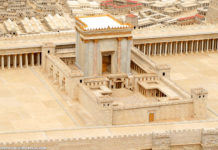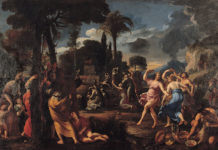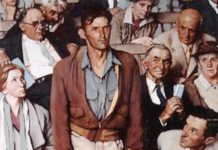As did True Father, True Mother emerged from a Pentecostal free church setting, the epitome of horizontal organization. But the movement they created has strong vertical elements, and is presenting itself as a model of good governance for all nations.
So we are looking at successful models of vertical governance: Roman Catholicism (RC) and the Church of Jesus Christ of Latter Day Saints (LDS). We’ll conclude that today, adding to the mix the Jehovah’s Witnesses (JW) and Baha’i.
The movement they created has strong vertical elements, and is presenting itself as a model of good governance for all nations.
In these organizations, a central office provides all educational materials worldwide, translated, the case of JW, into nearly 1,000 languages. It varies from a detailed lesson plan (JW), to prescribed scriptures and ceremonies (RC, LDS), to a scripture-based, self-paced small group curricula (Baha’i).
Thereby, the central point organizes the activities and, to a greater or lesser degree, shapes the worldview of the entire body. The central point’s teachings and decisions are set forth as revelation from God.
Representatives from the local communities enter the organs of greater inclusivity by appointment and election. At the top, the Pope is elected by the college of Cardinals. The JW Governing Body is self-perpetuating. The LDS Quorum of the Twelve Apostles is self-perpetuating, but is formally sustained at every local ward or branch conference once a year, at stake conferences twice a year, and at a ‘general conference’ held twice a year in Salt Lake City with 20,000 in attendance, broadcast to the entire Church.
Centralized power is subject to abuse; these organizations limit abuse by requiring that leaders sacrifice. Catholic leaders assume lifelong celibacy and receive only living expenses. All JW and LDS leaders and staff, part-time and full-time, serve without pay.
Common to these institutions is a global uniformity not just of teachings but of lifestyle, life course, spiritual practice, congregational size, and staff positions and functions. Common to them also is a unity beyond race and nation, a beautiful filial piety, and a trust that God is working through their system and its leadership.
Next we will look at the beauty of the horizontal system of governance, which produced the Lord and his Bride.
Common to them also is a unity beyond race and nation.
(Notes: An exception to the voluntary service rule is a living stipend for JW adults without children who devote full-time at their headquarters. The Baha’i tradition is one of unpaid local leadership and staff, but that is not a strict rule, and administrative and publications staff are paid.
(Interestingly, LDS founder Joseph Smith created an institution purposed to provide the political governance of the Kingdom of God on earth in preparation for the Second Advent. Called the “Council of Fifty,” it was a non-denominational entity representing the future “theo-democratic” kingdom of God on earth. It shed its non-denominational commitment under Brigham Young and disappeared as the organization adapted to the American separation of church and state.
(Citations: https://www.payscale.com/research/US/Employer=Baha%27i_National_Center/Salary
http://bahaicoherence.blogspot.com/2012/10/paid-service.html; photo of LDS President Russell Nelson and his two Counselors credit: http://www.churchistrue.com/blog/president-russell-m-nelson-chooses-new-counselors/.)







